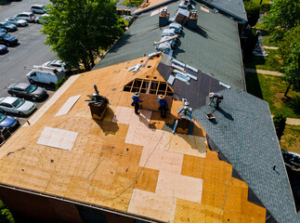Window Cleaning Bradenton FL can be easy if you have the right tools. You can do it yourself or hire professionals.

Start with a bucket of clean, warm soapy water (washing-up liquid is best). Avoid sunshine exposure as the washing solution will dry quickly leaving streaks. Use a squeegee and a clean microfibre cloth to wipe and dry.
Window cleaners use cleaning solutions to remove stubborn dirt and grime, leaving windows smudge-free. They can also identify and fix problems like clogged channels or painted sashes that block the opening of windows. Some cleaning professionals also use stronger chemicals to remove stains or contaminants that are impossible to get rid of with water. These products, however, present a number of health and safety issues and must be handled with care.
Regular window cleaning helps protect your home or business investment by extending the life of your windows. It is particularly important if your property is located near a road or construction site where spray paint and salt can damage glass.
In addition to removing hard minerals from the surface of your glass, regular window washing can prevent the growth of mold and mildew on windowsills and frames. This can save you money on repair and replacement costs.
Depending on the type of windows you have and your climate, regular window cleaning may also help reduce energy costs. The sun’s rays produce free heat that can be lost through dirty windows. If these rays are blocked by dirt or other contaminants, you may have to crank up the thermostat to maintain a comfortable temperature. Regularly scheduled window cleaning helps eliminate this waste and allows the sun’s rays to fully heat your living space.
While some homeowners choose to clean their own windows, most prefer the professional touch of a reputable and reliable window cleaner. Window cleaning involves a great deal of physical labor, and the proper tools are essential for achieving a superior finish. A professional window cleaner is trained to assess the condition of your windows and will recommend the best course of action based on the results of his inspection.
Most commercial cleaning companies include the inside and outside of the windows in their service. Some may even bundle the cleaning of the sill and frame into the price. Cleaning the frames and sills is a bit more difficult than washing the glass, as there are often nooks and crannies that are hard to reach. The best way to clean them is by using a brush or a sponge with a scrubby side.
Squeegee
Using a squeegee is the best way to clean windows without leaving streaks or dirt behind. It is quick, efficient and economical compared to paper towels or rags. Moreover, it is better for the environment and the health of the window cleaner. It is also an effective tool for removing mold, mildew and dirt from surfaces.
Squeegees are flat rubber tools that scrape off excess liquid from a surface, such as glass, tile or concrete. They are ideal for residential and commercial windows, and can be bought in a variety of shapes and sizes. They are also available in a range of materials, such as metal and plastic. Some are shaped for household use, while others are designed for professional window cleaning.
Most squeegees have a handle and a rubber blade, and can be adjusted to different angles. They can be used with or without soap, and can be wiped clean to prevent build-up. Some are made from recycled materials, making them an environmentally friendly choice.
To use a squeegee, first wet the surface of the window with soapy water. Make sure to wipe down the frame and sill before beginning to avoid any dirt contaminating the cleaned glass. Then, position the squeegee at an angle and run it across the window. Be careful not to apply too much pressure, as this may cause scratches on the surface.
Once the squeegee has been used, wipe it down with a microfiber cloth to remove any remaining dirt and water. This will also help to keep the blade of the squeegee dry, and reduce the risk of bacteria growing on it. It is also a good idea to change the squeegee frequently, especially if it is exposed to sunlight.
Several factors can affect the success of squeegee cleaning, including how large the windows are and how close the window cleaner can get to them. In many cases, squeegee cleaning is not a suitable option for high rise buildings and large storefronts, where there are multiple sections of glass to clean. In such cases, a different method should be used, such as straight pulls or fanning.
Microfiber Cloth
For windows, glass tables and mirrors, microfiber cloths offer an eco-friendly solution without the need for cleaning chemicals. These durable, reusable cloths are highly absorbent and can quickly remove dirt, dust and smudges from glass surfaces for a streak-free shine. Microfiber also dries faster than cotton, so you can easily switch to a dry cloth without having to worry about transferring lint or dirt back onto the surface.
The best microfiber cloths have a split-fiber design that traps and captures microscopic particles like dust, dirt and fingerprints, leaving the surface shiny and streak-free. When choosing a microfiber cloth, make sure it has a soft, lint-free finish, and is ideally sized for the job. Using the wrong size or type of microfiber cloth can leave streaks, scratch the surface and cause damage to the windows and surrounding surfaces.
Several companies manufacture microfiber cloths specifically for cleaning windows and other glass surfaces. Some microfiber cloths have a special honeycomb texture that is particularly effective for wiping away water spots and smudges from mirrors and glass, while others are specialized for applying cleaning solutions or polishing surfaces. Some even come with a spray bottle that can be used to sanitize surfaces or add extra shine.
Many janitorial services have made the switch to environmentally-friendly microfiber cloths, trading in their paper towels for a more hygienic alternative. In addition to reducing waste, these cloths are also much more effective at removing stubborn stains and dirt from glass and chrome. The smooth texture of E-Cloth microfiber cloths is ideal for smooth glass and chrome, while more heavily textured “scrubby” microfiber cloths are suitable for more obstinate residues like stuck-on food particles and dried toothpaste.
Microfiber can be used on its own to clean windows, or in conjunction with a cleaning solution, but it’s important to test the microfiber before use for absorption and lint-free finish. To do so, simply dip a corner of the microfiber in water and observe how well it absorbs. An overly wet cloth will leave behind water stains on surfaces, so it’s important to wring out the cloth thoroughly before cleaning with it. Once the window is cleaned, a dry microfiber cloth can be used to buff the surface and remove any remaining moisture or streaks.
Newspaper
There are many different types of cleaning products on the market today, but some people still use a simple item like newspaper to clean their windows. While this may seem a bit old-fashioned, it is surprisingly effective and can save money over the cost of cleaning supplies.
One of the main benefits of using newspaper for window cleaning is its lint-free structure. Unlike paper towels, newspapers are more rigid and have dense fibers that do not separate to cause lint. Furthermore, the ink on the paper can act as a mild abrasive to help scrub away dirt and dust from the surface of the glass.
Another advantage of using newspaper for window cleaning is that it is reusable. Unlike cloths, which need to be washed after each use, newspaper can simply be discarded when it becomes too dirty to continue cleaning. This can save on laundry detergent, electricity and water. Lastly, newspaper is also cheap and easily available, making it a cost-effective alternative to expensive chemical cleaners.
When using newspaper for window cleaning, be sure to wear gloves to avoid getting the ink on your hands. It is also recommended to work on a cloudy day so that sunlight does not dry the solution too quickly and leave streaks on the glass. Furthermore, make sure to switch out the newspaper often so that it is always clean and free of lint and debris.
To begin cleaning your windows with newspaper, gather the following supplies: a bottle of white vinegar, water, a spray bottle, and a stack of newspapers (preferably older ones). Start by mixing equal parts of white vinegar and water in a spray bottle or bucket. Next, spray the window with the solution. After the solution has been sprayed, take two pieces of newspaper and begin wiping the surface of the glass. Be sure to change out the newspaper often, as it will become dirty and wet very quickly. After the windows have been wiped, use a squeegee to remove any remaining solution and ensure that there are no streaks.
